Guinea pigs come in a wide range of colors and patterns. One of the most eye-catching colors that cavies can have is without a doubt black. Most people know that it’s possible for guinea pigs to have this color, but that’s where it stops. They don’t know too much else about them. On top of that, there are quite a few misconceptions about them floating around. To remedy that, we’re going to take a look at 6 interesting facts about these beautiful cavies.
If you want to learn more about black guinea pigs you’ve come to the right place. Let’s dig in!
1. Black guinea pigs are not a seperate breed
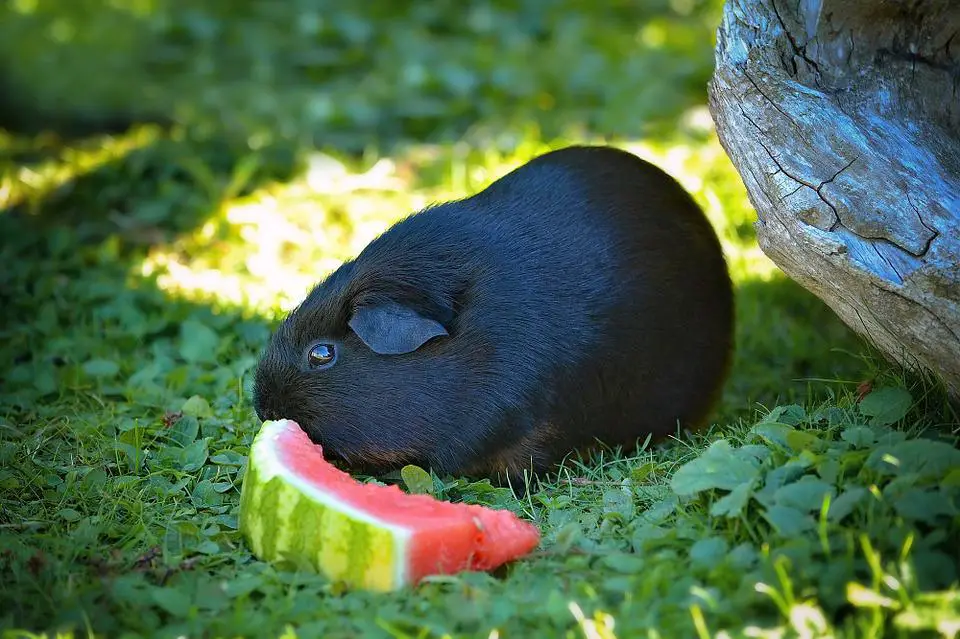
When it comes to guinea pigs, many people are confused about breeds, colors, and patterns.
They often get mixed up, which results in people believing that certain colors or patterns are a distinct breed. For instance, many people mistakenly believe that black guinea pigs are a distinct breed, which is definitely not the case.
Black is simply a color that guinea pigs can have, it’s not a separate breed. All of the guinea pig breeds can be black.
2. The genetics behind their solid black coat are quite interesting
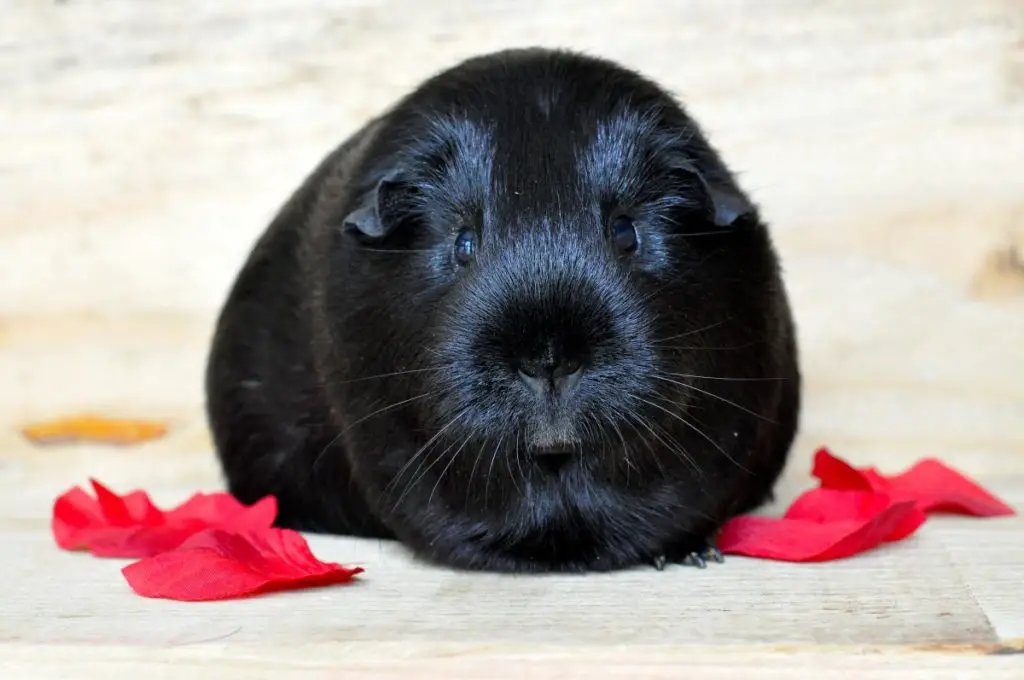
Cavies can have many different colors, but all the colors they can have are made from two basic pigments: red and black. The black colors that they can have are black, chocolate, beige, and slate. The red series colors are red, gold, orange, and cream. All the possible colors that cavies can have consist of these colors (or white, which is an absence of color).
A solid black cavy has the black color gene (B), which results in them having a coat that’s black throughout without any other colors.
To learn more about the genetics behind cavy colors, I highly recommend checking out this website.
3. Black cavies can have long or short hair
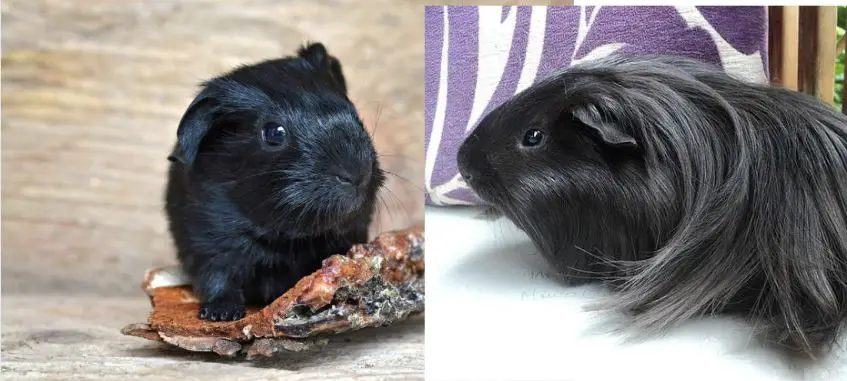
By now you should know that black cavies are not a distinct breed. Because they’re not a distinct breed and due to the fact that this coloration can occur in any of the breeds, they can have long as well as short hair. If you’re interested in a long-haired black piggy, I recommend getting one of these breeds:
If you’re more interested in a short-haired one, check out one of these breeds:
In addition, if you want a black guinea pig with curly hair, the Rex is the right one for you.
4. Solid Black guinea pigs are quite rare
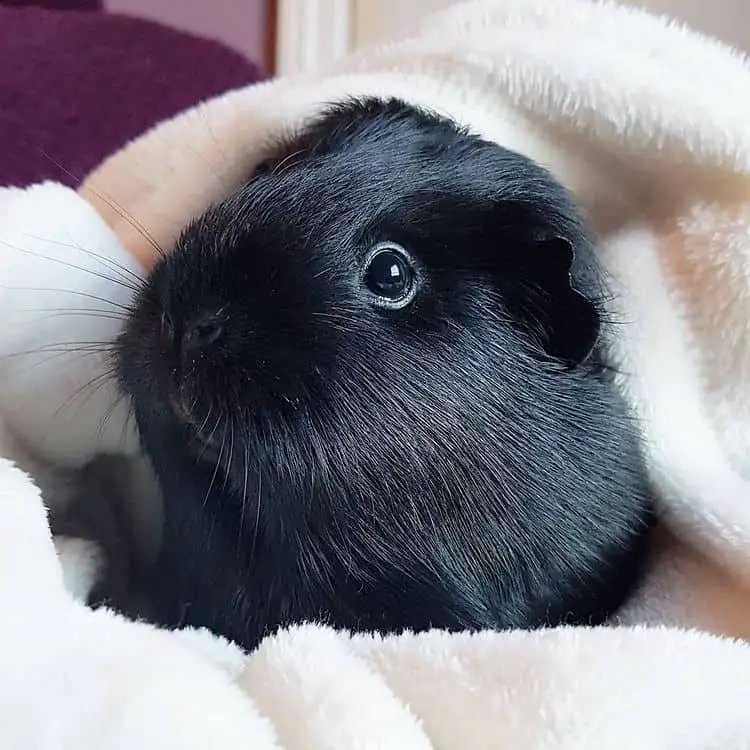
A solid black guinea pig is not easy to find. They’re quite rare because most cavies are multi-colored. Some sources say that the color black occurs more often in American guinea pigs, but there’s not really any evidence to support this.
Because solid black guinea pigs are quite rare, they might also be slightly more expensive than other colorations. While the average guinea pig costs between $25 and $50 (depending on the breed), a black cavy might cost double that, depending on your location and availability.
5. Guinea pigs can have a chocolate color
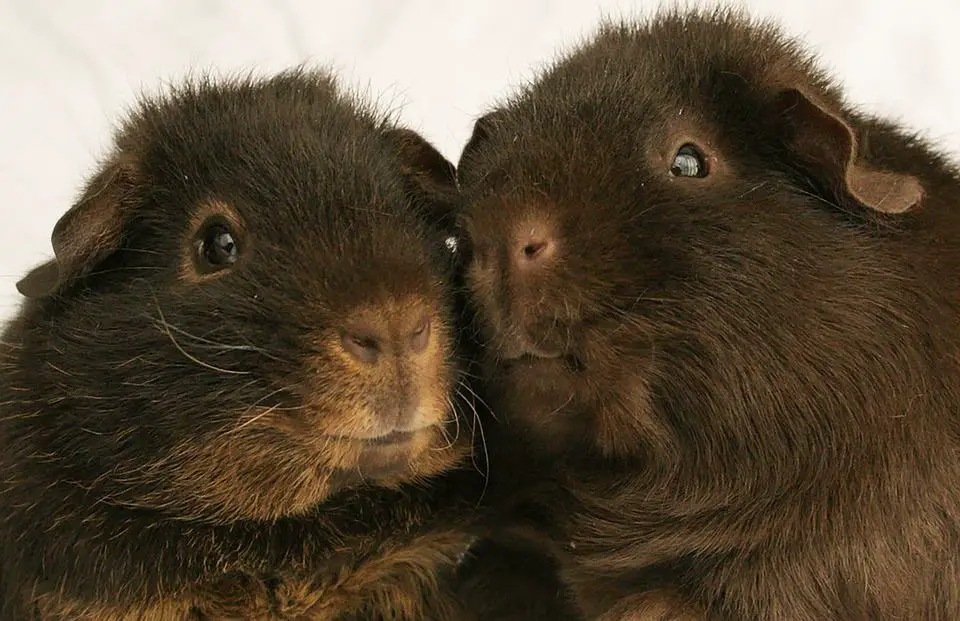
If it’s difficult to find a solid black cavy for sale in your region it might be wise to expand your search to include chocolate cavies as well. Chocolate guinea pigs have a very similar look to black ones and are genetically very similar.
The primary difference between them is that chocolate guinea pigs have a color that’s more brown than black. In addition, their eyes have a ruby cast.
6. Skinny pigs can be black
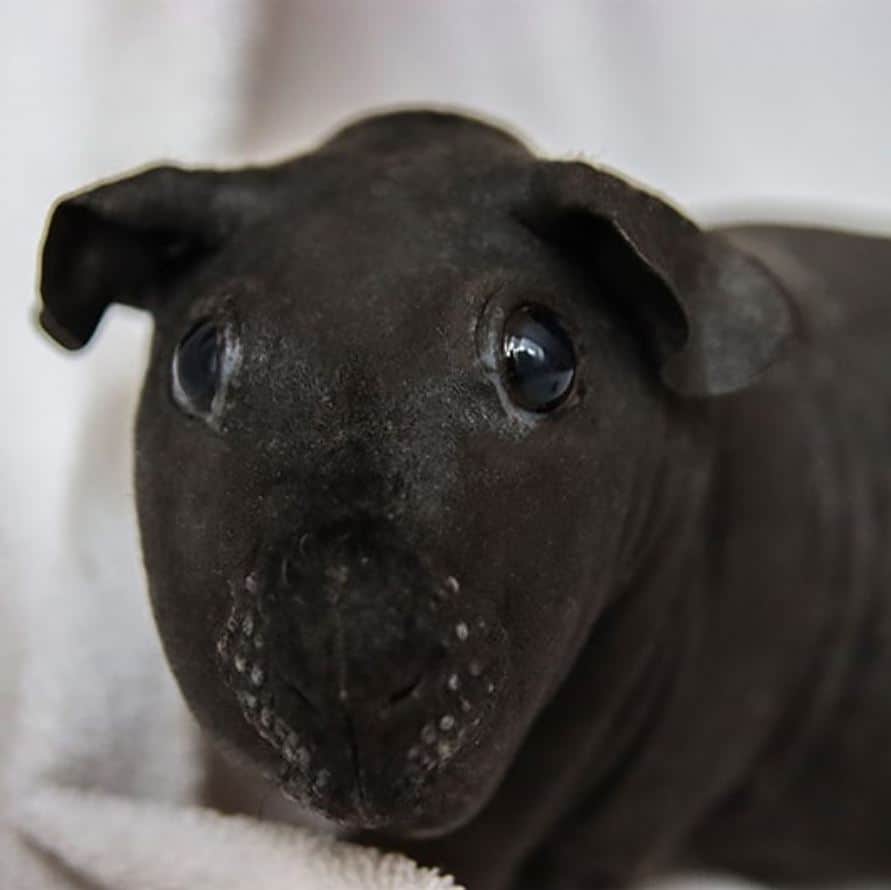
You might think that skinny pigs are all the same color because they have no hair to give them a different color, but that’s not true.
It might sound weird, but skinny pigs can also be black. The reason why this happens is that the pigment in their skin is the same color as their hair would normally be. Because of that, skinny pigs can have a variety of different colors and patterns, just like their furry cousins.
Final words
Guinea pigs come in a diverse range of colors, patterns, and breeds. Knowing the difference between them can sometimes be tricky. As we’ve discovered, black cavies are not a distinct breed, but rather a coloration that all the cavy breeds can have.
It’s quite a rare color, so if you see one, consider yourself lucky. Due to their rarity, they’re also often slightly more expensive than other, less-rare colors.
- How Long Do American Eskimo Dogs Live? Important Factors and Care Tips - September 29, 2023
- Do American Bulldogs Need Grooming? Essential Tips and Care Guidelines - September 29, 2023
- Do Bengal Cats Enjoy Playing? Essential Tips for Keeping Them Active - September 29, 2023